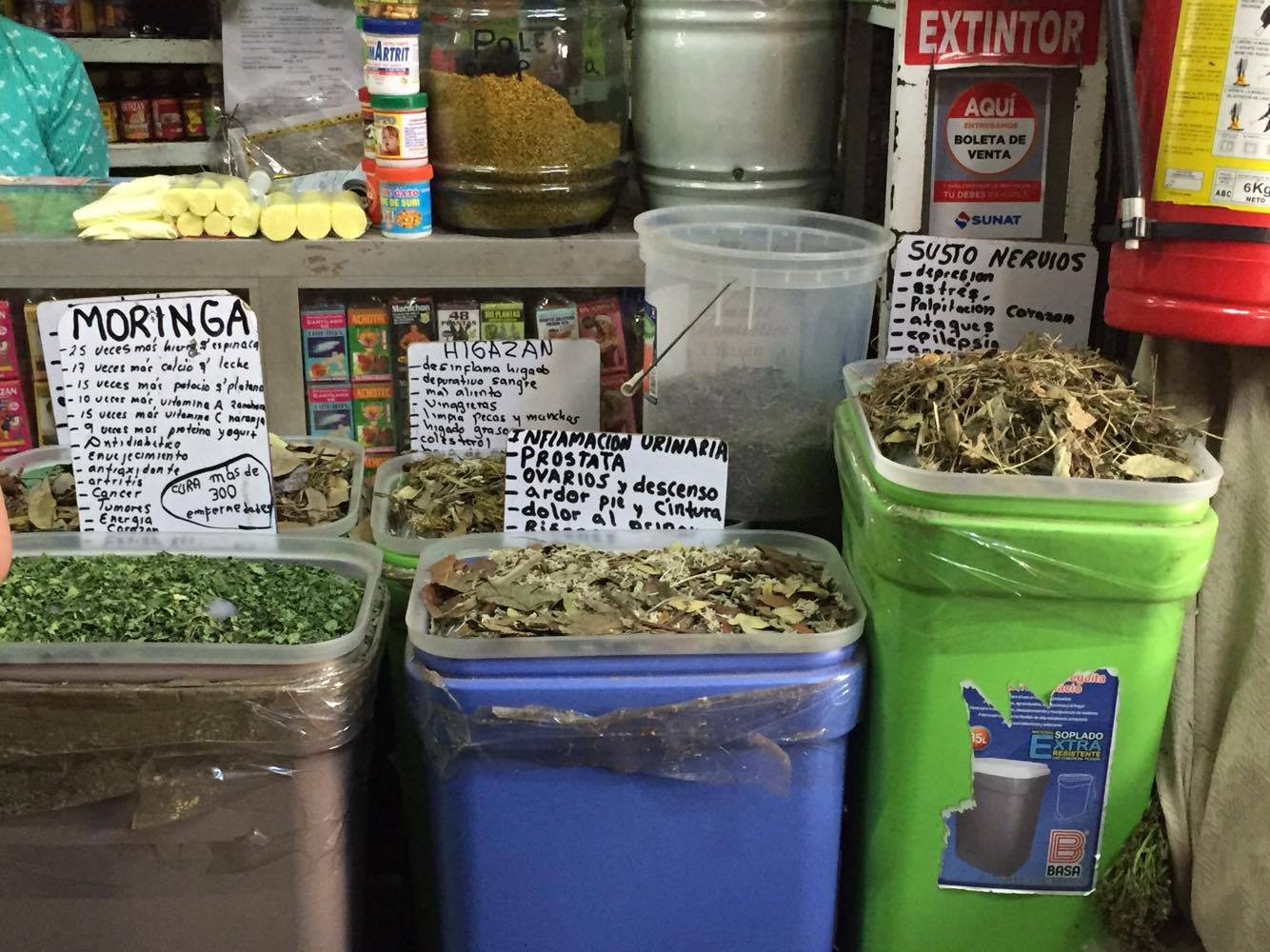
By Caroline Kuritzkes
[divider]
A flight of stairs beneath Lima’s single metro line, the Gamarra Market is both exposed and concealed. Octagonal umbrellas mask magenta chicha juice stands; cylindrical sacs flaunt bounties of quinoa, corn, and bee pollen; alligator jaws, snake skins, and coca leaves peek under square stalls stacked like a deck of cards over an expanse of 24 city blocks. Despite bearing the status of the largest informal market in the Americas, Gamarra remains, in many ways, a hidden gem. Linked to Miraflores by a bus ride through Lima’s late-morning traffic and five stops on the city’s metro, such vivid geometry lies tucked away from Lima’s upper echelons. 200,000 shoppers and vendors frequent Gamarra each day at an hour’s commute from San Isidro’s police-protected condos and Barranco’s beachside boardwalks.
Gamarra’s stalls boast everything from grains, teas, and spices to microwaves, television sets, and graphic t-shirts plastered on storefront windows like squares on a checkerboard. Herbal aromas waft in between sacs of tea, over tents of squash and cane, and through strands of straw. Meandering in and out of the market’s labyrinth, shoppers transition seamlessly between ticket booths in the metro station’s courtyard to herbal ointments obscured by bundles of avocado and passion fruit. A vendor told me her collection of eucalyptus and coca oils, lotions, and candles are designed for rituals of love and matrimony, though outsiders know it more commonly as witchcraft––“el mercado de las brujas.” Three stalls down, a woman prepared a famous blended drink, made out of the frogs piled in a glass case on her shop front’s countertop.
Witchcraft, fruit, electronics, and all, the Gamarra of today is far removed from the textile market it once was at the start of the 20th Century. Its roots extend to the labor movement of La Victoria––a workers’ district in Lima settled by displaced farmers and Italian, Chinese, and Jewish immigrants. Parallel to textile factories such as the Fabrica de Tejidos Santa Catalina (built in 1889) and La Parcela (built in the 1940s), migrant workers erected slum barrios, an urban sprawl still visible today from the Gamarra metro stop. During the 1930s, the Peruvian government constructed 4,000 housing units in La Victoria to placate social unrest among the district’s working classes, a program dismantled after the presidency of Óscar Benavides in 1939. Textile businesses and sweatshops continued to multiply throughout the 1940s, 50s, and 60s, despite zoning laws that kept much of La Victoria’s production illegal––not to mention informal and cheap. In 1972, Lima passed a rezoning initiative that officially formalized some of the businesses that had been operating for years in the shadows.
Still, the 20,000 stalls that cover Gamarra today bear witness to the city’s difficulties registering the market’s informal enterprises, as well as to the endurance of the market’s informal heritage. Gamarra’s informality harbors not only a legal legacy, but also an aesthetic one: a commercialism at once distinct from Lima’s elite, yet attractive to tourists who think they have stumbled upon an authentic and uniquely “Peruvian” experience of buying.
Caroline Kuritzkes is a History major in Ezra Stiles college. Contact her at caroline.kuritzkes@yale.edu.
[aesop_image img=”https://live-tyglobalist.pantheonsite.io/wp-content/uploads/2016/08/Gamarra-2.jpg” credit=”Photo by Michelle Santos.” align=”left” lightbox=”on” captionposition=”left”]